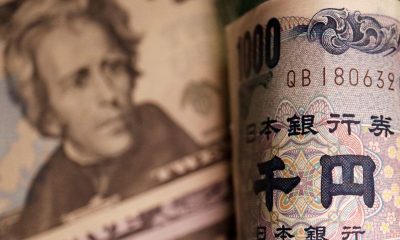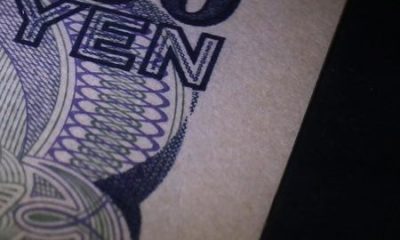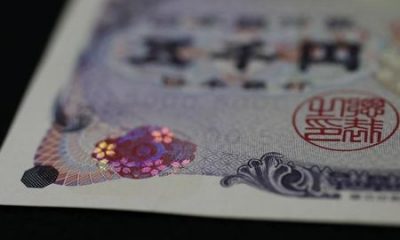Economy
US manufacturing output rises, outlook for factories weak


By Lucia Mutikani
WASHINGTON (Reuters) -Production at U.S. factories rose in November, lifted by a rebound in motor vehicle output following the end of strikes, but activity was weaker elsewhere as manufacturing grapples with higher borrowing and softening demand for goods.
Manufacturing output rose 0.3% in November, the Federal Reserve said on Friday. Data for October was revised lower to show production at factories falling 0.8% instead of by the previously reported 0.7%. Economists polled by Reuters had forecast factory output would rebound 0.4%. Excluding motor vehicles and parts, manufacturing production slipped 0.2% last month.
“Manufacturing continues to limp along and is unlikely to provide the fuel for economic growth in the near term,” said Christopher Rupkey, chief economist at FWDBONDS in New York.
Manufacturing, which accounts for 11.1% of the economy, continues to be hamstrung by higher interest rates. Despite an easing in financial conditions and prospects of rate cuts next year, a rapid improvement in factory output is not expected amid signs that businesses are throttling back on inventory accumulation in anticipation of softer demand.
A survey from the Institute for Supply Management this month found that manufacturers viewed customer inventories as having increased “toward the upper end of ‘about-right’ territory” in November. The ISM’s manufacturing PMI has remained in contraction territory for 13 straight months, the longest such stretch since the August 2000-January 2002 period.
The Federal Reserve held interest rates steady on Wednesday and signaled in new economic projections that the historic tightening of monetary policy engineered over the last two years is at an end and lower borrowing costs are coming in 2024.
The lackluster outlook for manufacturing was reinforced on Friday by the New York Fed’s Empire State survey, which showed factory activity in the region sinking deeper into recession in December. The survey’s general business conditions plunged 24 points to -14.5 this month, with new orders and employment measures stuck in negative territory.
Manufacturers in the region were not overly optimistic that business conditions would improve over the next six months. Sentiment surveys, such as the ISM and Empire State, however, likely overstate the weakness in manufacturing.
AUTO SECTOR REBOUND
The Fed report showed production at factories decreased 0.8% on a year-on-year basis in November.
Motor vehicle and parts output rebounded 7.1% last month, recouping the bulk of the 9.9% decline in October, after the end of the United Auto Workers strikes against Detroit’s “Big Three” automakers.
There were solid increases in production of computer and electronic products as well as aerospace and miscellaneous transportation equipment, which, together with output of motor vehicles and parts, helped boost durable manufacturing by 1.2%.
But output of wood products declined. Production of nondurable goods dropped 0.5% amid steep declines in the output of textiles as well as apparel and leather.
Mining output rose 0.3% after falling 1.1% in October. Utilities production slipped 0.4% following a 1.4% plunge in the prior month. Overall industrial production was up 0.2% in November after decreasing 0.9% in October.
Capacity utilization for the industrial sector, a measure of how fully firms are using their resources, edged up one-tenth of a percentage point to 78.8% in November. It is now nine-tenths of a percentage point below its 1972–2022 average.
The operating rate for the manufacturing sector rose to 77.2% from 77.0% in the prior month and is 1.0 percentage point below its long-run average.
Economy
Russian central bank says it needs months to make sure CPI falling before rate cuts -RBC


© Reuters. Russian Central Bank Governor Elvira Nabiullina attends a news conference in Moscow, Russia June 14, 2019. REUTERS/Shamil Zhumatov/File Photo
MOSCOW (Reuters) – Russia’s central bank will need two to three months to make sure that inflation is steadily declining before taking any decision on interest rate cuts, the bank’s governor Elvira Nabiullina told RBC media on Sunday.
The central bank raised its key interest rate by 100 basis points to 16% earlier in December, hiking for the fifth consecutive meeting in response to stubborn inflation, and suggested that its tightening cycle was nearly over.
Nabiullina said it was not yet clear when exactly the regulator would start cutting rates, however.
“We really need to make sure that inflation is steadily decreasing, that these are not one-off factors that can affect the rate of price growth in a particular month,” she said.
Nabiullina said the bank was taking into account a wide range of indicators but primarily those that “characterize the stability of inflation”.
“This will take two or three months or more – it depends on how much the wide range of indicators that characterize sustainable inflation declines,” she said.
The bank will next convene to set its benchmark rate on Feb. 16.
The governor also said the bank should have started monetary policy tightening earlier than in July, when it embarked on the rate-hiking cycle.
Economy
China identifies second set of projects in $140 billion spending plan


© Reuters. FILE PHOTO: Workers walk past an under-construction area with completed office towers in the background, in Shenzhen’s Qianhai new district, Guangdong province, China August 25, 2023. REUTERS/David Kirton/File Photo
SHANGHAI (Reuters) – China’s top planning body said on Saturday it had identified a second batch of public investment projects, including flood control and disaster relief programmes, under a bond issuance and investment plan announced in October to boost the economy.
With the latest tranche, China has now earmarked more than 800 billion yuan of its 1 trillion yuan ($140 billion) in additional government bond issuance in the fourth quarter, as it focuses on fiscal steps to shore up the flagging economy.
The National Development and Reform Commission (NDRC) said in a statement on Saturday it had identified 9,600 projects with planned investment of more than 560 billion yuan.
China’s economy, the world’s second largest, is struggling to regain its footing post-COVID-19 as policymakers grapple with tepid consumer demand, weak exports, falling foreign investment and a deepening real estate crisis.
The 1 trillion yuan in additional bond issuance will widen China’s 2023 budget deficit ratio to around 3.8 percent from 3 percent, the state-run Xinhua news agency has said.
“Construction of the projects will improve China’s flood control system, emergency response mechanism and disaster relief capabilities, and better protect people’s lives and property, so it is very significant,” the NDRC said.
The agency said it will coordinate with other government bodies to make sure that funds are allocated speedily for investment and that high standards of quality are maintained in project construction.
($1 = 7.1315 renminbi)
Economy
Russian central bank says it needs months to make sure CPI falling before rate cuts -RBC


© Reuters. Russian Central Bank Governor Elvira Nabiullina attends a news conference in Moscow, Russia June 14, 2019. REUTERS/Shamil Zhumatov/File Photo
MOSCOW (Reuters) – Russia’s central bank will need two to three months to make sure that inflation is steadily declining before taking any decision on interest rate cuts, the bank’s governor Elvira Nabiullina told RBC media on Sunday.
The central bank raised its key interest rate by 100 basis points to 16% earlier in December, hiking for the fifth consecutive meeting in response to stubborn inflation, and suggested that its tightening cycle was nearly over.
Nabiullina said it was not yet clear when exactly the regulator would start cutting rates, however.
“We really need to make sure that inflation is steadily decreasing, that these are not one-off factors that can affect the rate of price growth in a particular month,” she said.
Nabiullina said the bank was taking into account a wide range of indicators but primarily those that “characterize the stability of inflation”.
“This will take two or three months or more – it depends on how much the wide range of indicators that characterize sustainable inflation declines,” she said.
The bank will next convene to set its benchmark rate on Feb. 16.
The governor also said the bank should have started monetary policy tightening earlier than in July, when it embarked on the rate-hiking cycle.

 Forex2 years ago
Forex2 years agoForex Today: the dollar is gaining strength amid gloomy sentiment at the start of the Fed’s week

 Forex2 years ago
Forex2 years agoHow is the Australian dollar doing today?

 Forex1 year ago
Forex1 year agoUnbiased review of Pocket Option broker

 Forex2 years ago
Forex2 years agoDollar to pound sterling exchange rate today: Pound plummeted to its lowest since 1985

 Cryptocurrency2 years ago
Cryptocurrency2 years agoWhat happened in the crypto market – current events today

 World2 years ago
World2 years agoWhy are modern video games an art form?

 Stock Markets2 years ago
Stock Markets2 years agoMorgan Stanley: bear market rally to continue

 Economy2 years ago
Economy2 years agoCrude oil tankers double in price due to EU anti-Russian sanctions

































